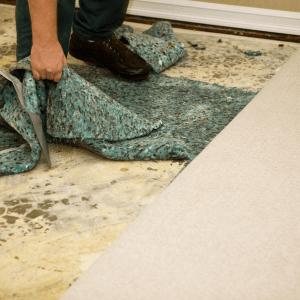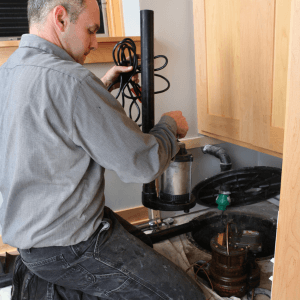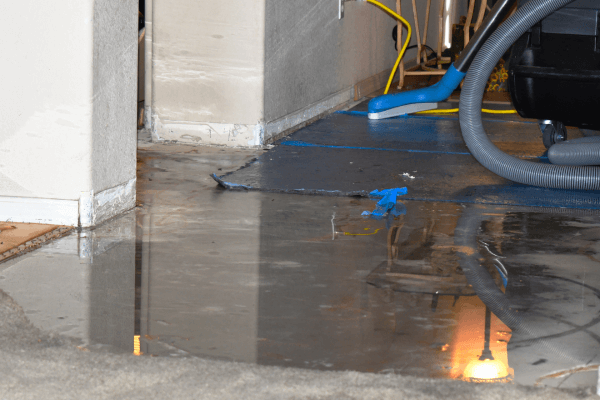Flooding can be a homeowner’s worst nightmare. When the rain pours and the waters rise, the immediate concern often shifts from safety to the potential damage to your home. But it’s not just the floodwaters that pose a threat; the longer they linger, the greater the risk of structural issues and mold growth. In such moments, understanding the process of water extraction becomes crucial.
In this guide, we’ll explore how you can protect your home after a flood, focusing on:
- What water extraction is and why it matters
- Common causes of water damage
- The steps involved in water extraction
- The essential role professionals play in this process
- How you can prevent future water damage
By the end of this guide, you’ll be well-equipped with knowledge to safeguard your home. Let’s get started.
What is Water Extraction?
Water extraction is the process of removing excess water from a property after a flood or other water intrusion event. This procedure is crucial for restoring the affected area and preventing further damage. It involves a combination of techniques and equipment designed to efficiently remove water and moisture from carpets, walls, and other surfaces.
The importance of timely water extraction cannot be overstated. When standing water is left untreated, it can lead to structural damage, mold growth, and a host of other problems. Therefore, understanding the steps involved in this process is vital for homeowners facing water-related issues.
Common Causes of Water Damage
Understanding the common causes of water damage is essential for prevention. Here are a few key culprits:
Natural Disasters
Floods and hurricanes are extreme weather events that can lead to significant water intrusion. Homeowners in flood-prone areas should invest in flood insurance and consider elevating their homes.
Plumbing Failures
Leaky pipes, overflowing toilets, and malfunctioning appliances can all lead to water damage. Regular inspections and prompt repairs can help mitigate these risks.
Roof Leaks
A damaged roof can allow rainwater to seep into your home, causing damage to ceilings and walls. Regular roof maintenance is crucial in preventing this type of water intrusion.
For a deeper dive into what often causes of water damage, check out our blog post Top 5 Causes of Water Damage in San Antonio.
Steps Involved in Water Extraction

The water extraction process typically involves several key steps:
Initial Assessment
Before any extraction work begins, a thorough assessment of the affected area is conducted. This helps identify the source of the water and determine the most effective extraction method. Safety measures are also put in place to protect occupants from hazards such as electrical shock or structural instability.
Water Removal
Once the assessment is complete, the actual water removal process begins. Professionals use specialized equipment such as submersible pumps and industrial wet/dry vacuums to extract standing water quickly and efficiently.
Drying and Dehumidification
After the bulk of the water has been removed, the team will focus on drying out the area. This involves using high-powered fans and dehumidifiers to remove moisture from the air and surfaces, preventing further damage and mold growth.
Cleaning and Sanitizing
Finally, the affected areas are cleaned and sanitized to eliminate any potential health risks associated with water damage, such as bacteria or mold spores.
Why Professional Water Extraction is Essential
While some homeowners may consider tackling water extraction themselves, there are several compelling reasons to hire professionals:
Expertise and Experience
Professional water extraction services have the expertise and experience to handle a wide variety of water intrusion scenarios. They are trained to assess the situation quickly and determine the best course of action, minimizing damage and speeding up the recovery process.
Advanced Equipment
Professional services utilize advanced equipment and technology that most homeowners do not have access to. From industrial-grade pumps to powerful dehumidifiers, these tools allow for efficient and effective water removal and drying.
Avoiding Mold Growth
One of the biggest risks associated with water damage is mold growth. Mold can begin to form within 24-48 hours of water exposure, making rapid extraction and drying essential. Professionals understand the critical timelines involved and can take the necessary steps to prevent mold growth, saving homeowners from potential health risks and costly remediation.
DIY Water Extraction vs. Professional Services
Many homeowners may be tempted to handle water extraction on their own, but this can come with significant risks. Here’s a closer look at the pros and cons of both approaches:
DIY Water Extraction
Pros:
- Cost savings if you have the necessary equipment
- Immediate action before professionals arrive
Cons:
- Lack of expertise can lead to inadequate extraction
- Potential for secondary damage and mold growth
Professional Water Extraction
Pros:
- Trained experts with knowledge of best practices
- Use of specialized equipment for effective extraction
- Reduced risk of long-term damage and health issues
Cons:
- Higher upfront cost compared to DIY
While DIY may seem appealing, the potential for mistakes and subsequent damage often outweighs the initial savings. Investing in professional services can provide peace of mind and ensure a thorough job.
Preventative Measures for Future Protection

Once the immediate threat of water damage has been addressed, homeowners should focus on preventative measures to protect their properties in the future. Here are some key strategies:
Regular Maintenance
Conduct regular inspections of your plumbing, roof, and gutters. Addressing small issues before they become major problems can greatly reduce the risk of water damage.
Invest in Flood Insurance
For homes in flood-prone areas, investing in flood insurance can provide financial protection and peace of mind. Be sure to review your policy and understand what is covered and what is not. For more information on flood insurance and disaster preparedness, visit the FEMA website.
Install a Sump Pump
A sump pump is an effective way to prevent flooding in your basement. During heavy rains, this device removes excess water from your home, helping to keep your basement dry.
By taking these preventative measures, homeowners can protect their properties and minimize the risk of water damage in the future.
Conclusion
Understanding the process of water extraction and its importance is crucial for homeowners facing the threat of flooding. By recognizing the common causes of water damage, being aware of the steps involved in extraction, and considering professional services, homeowners can take proactive measures to protect their properties.
If you find yourself dealing with the aftermath of a flood, don’t hesitate to reach out to Sapphire Restoration. Our team of experts is ready to assist you with professional water extraction services, ensuring your home is restored quickly and safely.

